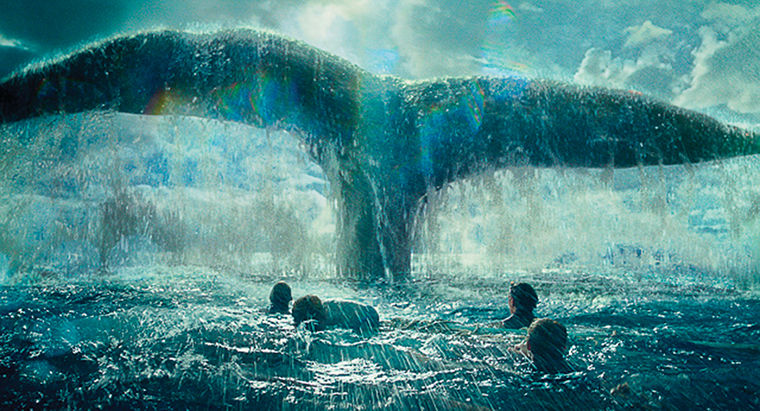Watered-down characters sink ‘In the Heart of the Sea’
“In the Heart of the Sea” hit U.S. theaters Dec. 11 after premiering in London and bringing in more than $18 million for the non-U.S. opening weekend.
December 14, 2015
“In the Heart of the Sea” follows the grueling journey of the Essex, sunk by a whale thousands of miles off the Chilean coast. Director Ron Howard (“Apollo 13”) compels the audience to wallow in the crew’s tortuous hardships, stranded in open water for 90 days with the threats of starvation and dehydration. The film tries to capture good old-fashioned American ingenuity, and it would have worked, too, had the script measured up to the brilliant visuals. Despite the abundance of ocean and sky, the story doesn’t have room to breathe.
Adapted from the nonfiction book written in 2000 by Nathaniel Philbrick, the story of the Essex begins in 1820 when it set sail from Nantucket Island. At the helm of the ship is George “Silver Spoon” Pollard (Benjamin Walker, “Abraham Lincoln, Vampire Hunter”) with the First Mate Owen “Totally Not Australian” Chase (Chris Hemsworth, “The Avengers”) and cabin boy Thomas Nickerson (Brendan Gleeson, “The Guard”), who years later recounts the story to Moby-Dick author Herman Melville (Ben Whishaw, “Spectre”).
No expense is spared as far as the visual effects are concerned, and the fast-paced, visceral editing is appropriate for the all-encompassing terror of towering waves out on the raging sea. Taking full advantage of stunning cinematography by Anthony Dod Mantle, Howard perfectly navigates the delicate subject matter of whaling. The tenacity of that industry is made to be a sight to behold, in the same way that one look at the mighty Hoover Dam commands awe, despite the negative environmental impacts that such herculean feats over nature tend to have.
The historical context demands heroes who are opportunistic and greedy, yet heroic and relatable. Hemsworth’s character uses his talents to undertake activities now condemned in the 21st century, but he still comes off as admirable. The cunning versatility of the crew doesn’t last, however. Humankind appears so majestic and powerful in one moment, only to become pitifully vulnerable the next. “Jaws” instilled fear of the creatures of the deep, but this film won’t make viewers afraid of whales so much as it homes in on our fear of human frailty.
Unfortunately for such a glaringly human story, the characters and their dialogue often come off as disappointingly sterile and forced. The characters are so one-dimensional most only have one recognizable trait-—usually in the form of an object they carry or their job on the ship. Even the tremendous potential of Gleeson is wasted on the old survivor-telling-war-stories cliché. Speaking of which, we hardly learn anything that isn’t spoken out loud, whether it comes right from the character’s mouths or from Gleeson’s narration. For example, we get to see one clash between Captain Bollard and First Mate Chase before narration tells us “they bickered like an old married couple,” rather than allowing it to develop on screen. The audience is just expected to take Gleeson’s word for it and move on. Unfortunately, all the raw emotion is buried beneath the Styrofoam-cutout characters and sluggish action-drama tropes.
“In the Heart of the Sea” has excellent imagery working for it, expertly placing you in the heat of the action, with the tortuous sun beating on you by day, and the waves suffocating you by night. Sure, that makes for a novel thrill ride, but abandon all hope for fully fleshed-out characters or interesting dialogue, because they have yet to surface.








